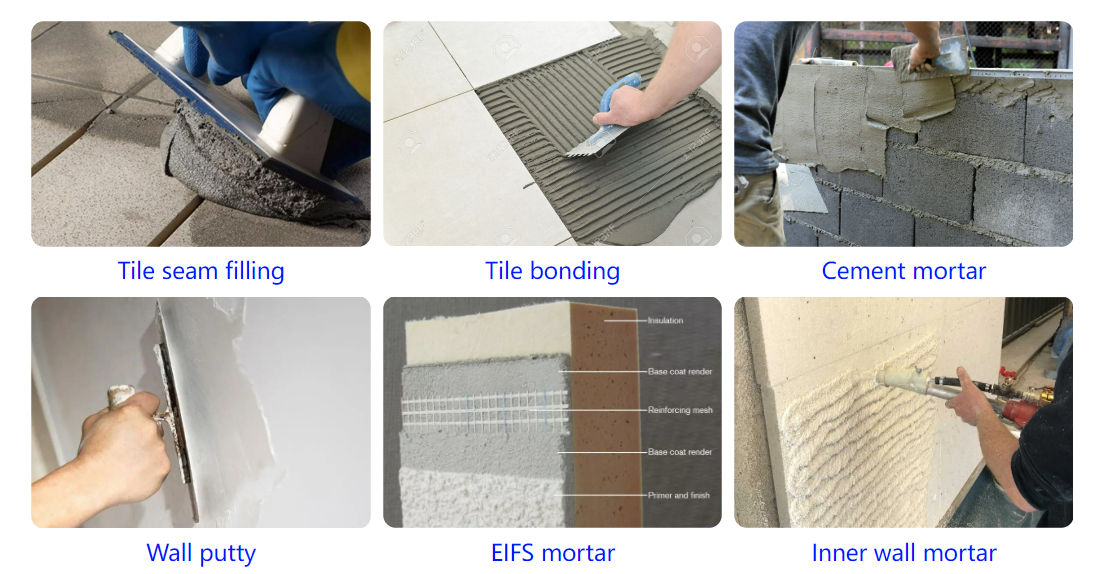
Nov . 29, 2024 21:54 Back to list
Exploring HPMC Composition and Its Applications in Pharmaceutical Formulations and Drug Delivery Systems
Understanding HPMC Structure and Its Applications
Hydroxypropyl Methylcellulose (HPMC) is a pivotal excipient in various pharmaceutical and industrial applications due to its unique structural properties and functionality. As a cellulose derivative, HPMC is synthesized by reacting cellulose with propylene oxide and methyl chloride, resulting in a compound that is soluble in water and provides a versatile range of properties.
Structural Composition of HPMC
The molecular structure of HPMC consists of a cellulose backbone, which is a polysaccharide made up of glucose units linked by β-1,4-glycosidic bonds. In HPMC, certain hydroxyl groups on the cellulose are modified by hydroxypropyl and methyl groups. The degree of substitution of these groups influences the solubility, viscosity, and compatibility of HPMC with other materials.
The presence of hydroxypropyl groups enhances the solubility of HPMC in aqueous solutions, while the methyl groups contribute to its gel-forming ability. This unique combination of modifications allows HPMC to be utilized in diverse formulations, ranging from solid tablets to liquid suspensions. The typical ratio of methyl to hydroxypropyl groups can vary, which further affects the physical and chemical properties of the compound, making it suitable for specific applications.
Functional Properties of HPMC
One of the most notable properties of HPMC is its ability to form stable gels and films. This feature is particularly advantageous in pharmaceutical formulations, where HPMC is used as a binder, thickening agent, and surfactant. Its gel-forming capabilities allow for controlled drug release, improving the bioavailability of poorly soluble drugs. Furthermore, HPMC’s low toxicity and ability to form transparent films make it a preferred excipient in various drug delivery systems.
hpmc structure

In addition to its pharmaceutical uses, HPMC finds applications in the food industry as a thickening agent, emulsifier, and stabilizer. It is often used in gluten-free products to enhance texture and moisture retention, providing consumers with a better eating experience. Similarly, in the cosmetic industry, HPMC serves as a gelling agent in creams and lotions, helping to achieve the desired viscosity while maintaining product stability.
Applications in Pharmaceutical Formulations
In the realm of pharmaceuticals, HPMC is prominently featured in the formulation of controlled-release dosage forms. Its ability to swell in the presence of water allows it to slowly release active pharmaceutical ingredients (APIs) over extended periods. This property is especially significant in chronic disease management, where sustained drug delivery is essential.
Moreover, HPMC is used in ocular drug formulations. Its compatibility with various biological systems and its ocular bioadhesive properties enable it to enhance the retention time of eye drops on mucosal surfaces, thereby increasing drug absorption. This makes HPMC a vital component in the development of effective therapies for eye disorders.
Conclusion
In conclusion, the structural attributes of Hydroxypropyl Methylcellulose underlie its broad applicability across multiple domains, particularly in pharmaceuticals and food science. Its unique chemical modifications facilitate functionalities such as gel formation, viscosity enhancement, and controlled release of active ingredients. As research and development continue to advance, HPMC is poised to expand its role in innovative formulations, improving efficacy and consumer experience in various industries. Understanding the HPMC structure and its properties will undoubtedly lead to more tailored and effective applications in the future.
-
Versatile Hpmc Uses in Different Industries
NewsJun.19,2025
-
Redispersible Powder's Role in Enhancing Durability of Construction Products
NewsJun.19,2025
-
Hydroxyethyl Cellulose Applications Driving Green Industrial Processes
NewsJun.19,2025
-
Exploring Different Redispersible Polymer Powder
NewsJun.19,2025
-
Choosing the Right Mortar Bonding Agent
NewsJun.19,2025
-
Applications and Significance of China Hpmc in Modern Industries
NewsJun.19,2025







